Thinking About a Pixie Cut? Read This First (From a Stylist)
I’ve spent a huge part of my life behind the chair, watching hair trends come and go. But the pixie cut? It’s always here. It’s more than just a haircut; it’s a full-on statement. I’ll never forget a client who came in with hair past her shoulders, feeling like she needed a major reset after a tough chapter. We talked for a long time before a single strand was cut. When she finally saw herself in the mirror with a soft, textured pixie, her entire posture changed. She looked lighter, stronger. It’s a powerful transformation I’ve been lucky enough to witness countless times.
In this article
But let’s be real: a pixie cut isn’t a casual decision. It’s a commitment. It’s built on trust with your stylist and a real understanding of hair. This isn’t about just lopping it all off; it’s about sculpting. It’s about working with your bone structure, your hair’s unique personality, and how it grows. I want to pull back the curtain and share what I’ve learned, so you can walk into a salon feeling confident and prepared.
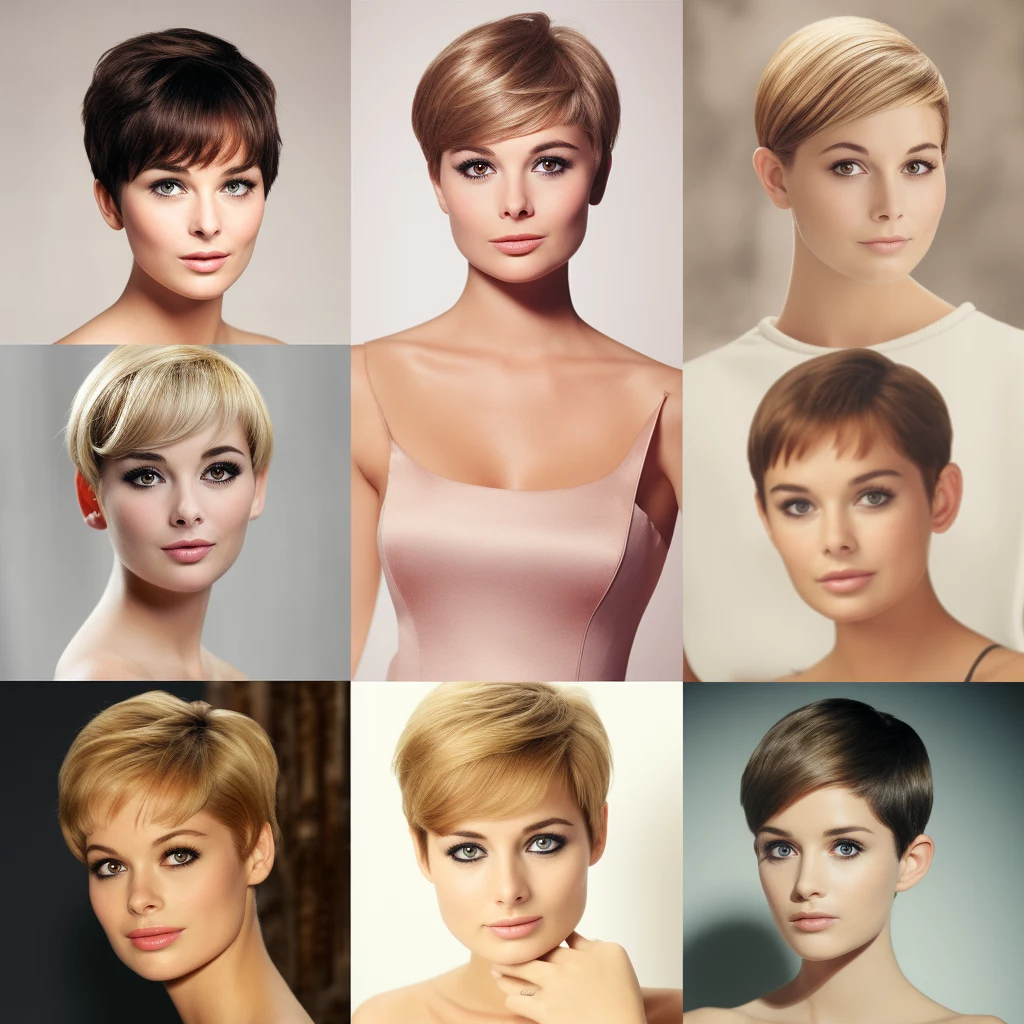
The Consultation: Honestly, This Is Everything
The best pixies start with a conversation, not a comb. A fantastic consultation is the absolute bedrock of a great short cut. If a stylist throws a cape on you and heads for the shampoo bowl without a serious chat first, that’s your cue to walk away. The first 15 minutes are where the magic really happens—where we build trust and get on the same page.
Bringing in photos is a great starting point, but they’re just that—a start. Here’s what a good stylist is really thinking about:
- Your Real-Life Routine: Are you a wash-and-go person, or do you genuinely enjoy spending 20 minutes styling your hair? Does your job require a polished look or is it more creative and casual? A pixie needs to slot into your life, not make it more complicated.
- Hair Texture and Density: I’m always running my fingers through a client’s hair. Is it fine and silky, or coarse and wiry? Is it dense, with tons of strands, or on the thinner side? Fine hair can look limp if it’s not cut to create volume, while thick hair can turn into a helmet if it’s not properly textured.
- Growth Patterns (aka Your Hair’s Quirks): I’m hunting for cowlicks, whorls, and tricky hairlines. You can’t fight a strong cowlick with a short fringe; you have to outsmart it and work with it. Cutting into it the wrong way can make it stick straight up for weeks. We also check the nape of your neck—does the hair grow up, down, or swirl to the side? This dictates how we shape the back so it lies perfectly.
- Your Bone Structure: Face shape is part of the puzzle, sure. But I’m also feeling for the occipital bone (that bump on the back of your head), your cheekbones, and your jawline. A great pixie hugs the head in some spots and builds volume in others to create a beautiful, balanced silhouette. For instance, if the back of your head is a bit flat, I need to use specific cutting techniques to build weight and create a more rounded, flattering shape.

Heads Up! Red Flags and Smart Questions
Finding the right stylist is like dating. You might not click with the first one, and that’s okay. To find someone who specializes in short hair, start by searching Instagram for hashtags like
[yourcity]pixiecut or
[yourcity]shorthair. Look for a portfolio with lots of short cuts, not just one or two.
When you’re in the chair, watch for these red flags:
- The Rush Job: They don’t want to talk and just want to get started. Big nope.
- Doesn’t Touch Your Hair Dry: A pro needs to feel your hair’s dry texture and see how your cowlicks behave naturally before it’s wet and well-behaved.
- Dismisses Your Concerns: If you say, “I’m worried my hair is too frizzy for this,” and they just say, “It’ll be fine,” without explaining why or how they’ll manage it, they aren’t listening.
Empower yourself! Here are three questions you should absolutely ask your potential stylist:
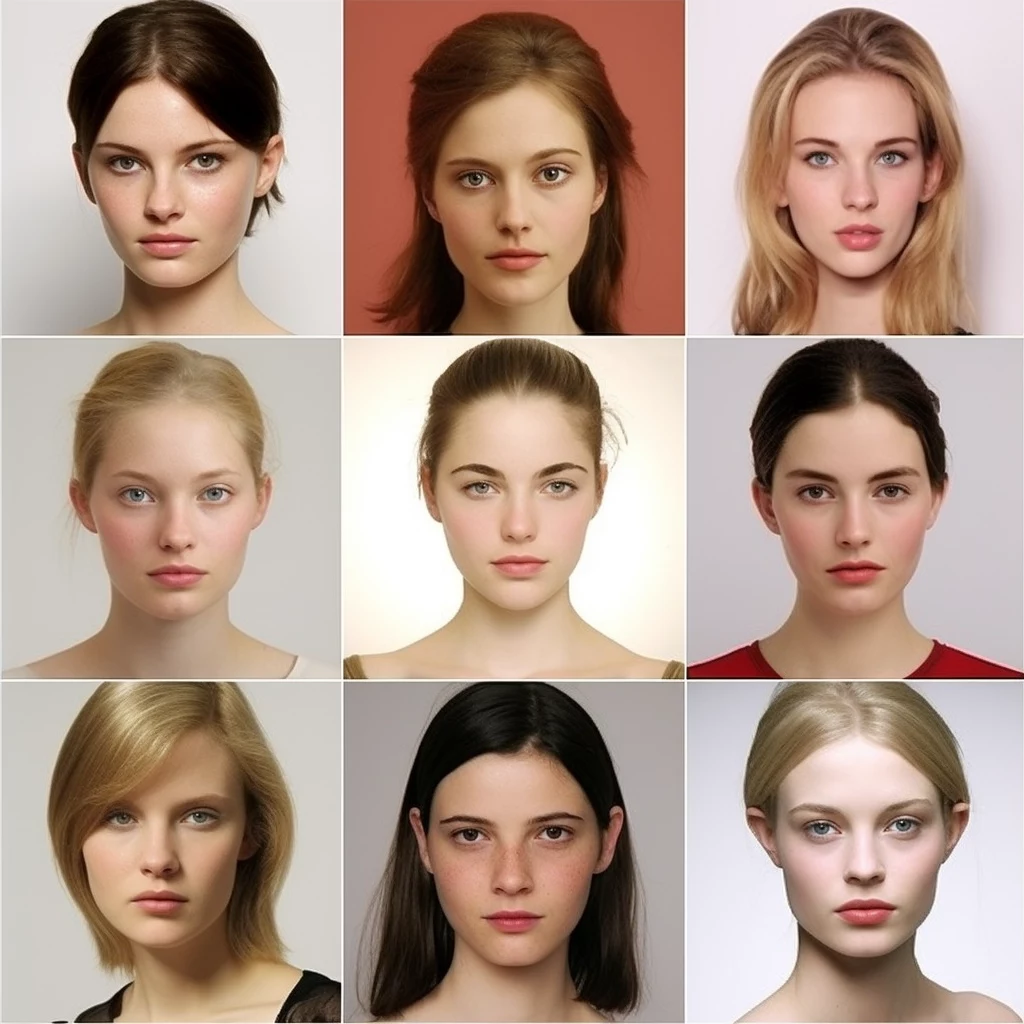
- “How often do you usually cut short hair like this? Can I see some examples of your work?”
- “I have a strong cowlick right here (point to it). What’s your game plan for dealing with that?”
- “What will the grow-out process look like with the cut you’re planning? How often will I need to come in to keep it looking good?”
The Art and Science of the Cut
Cutting short hair is basically applied geometry. There’s zero room for error, and every single angle matters. It’s what separates a $20 chop from a $150 style.
We use a technique called “graduation” to build weight and shape, especially in the back. By holding the hair at a low angle, we can create a soft, stacked curve that hugs your head shape instead of looking like a bowl. Then there’s texturizing, which is the secret sauce. This isn’t just about thinning the hair out; it’s about strategically cutting into the hair to create movement and soft edges. We might use the tips of the shears to “point cut” for a piecey look, or glide the shears down the hair to create seamless layers. Some of us even use a straight razor, which can create the softest, wispiest finish imaginable, but it’s a tool that requires a ton of skill and isn’t right for every hair type (a total no-go for very curly or fragile hair, as it can cause frizz).
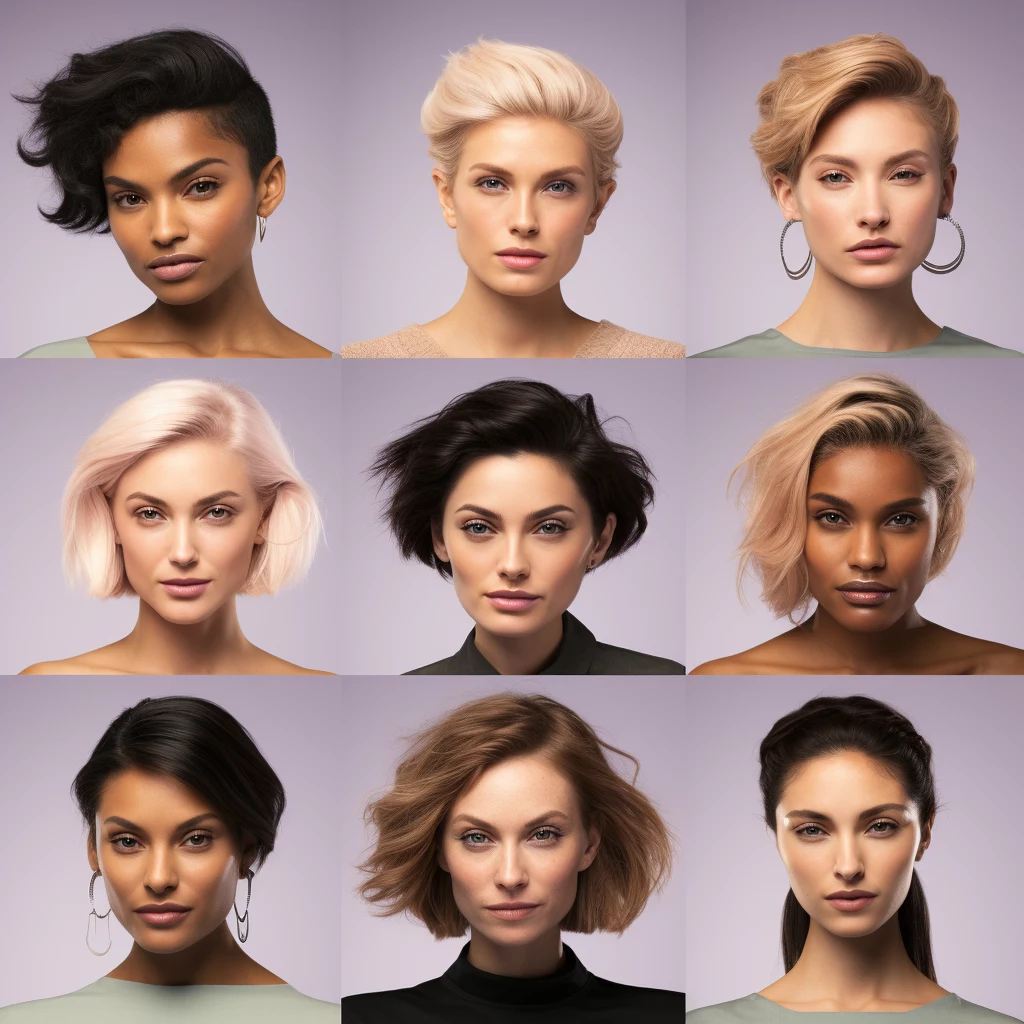
A Quick Look at Popular Pixie Styles
Forget the trendy names for a second. Let’s talk about the actual shapes and who they work for. A good stylist can mix and match these elements to create a cut that’s 100% you.
- The Soft, Classic Pixie: This is that timeless, gamine look that’s short, chic, and hugs the head. The edges are soft and piecey, not harsh. It’s perfect for straight or slightly wavy hair and really shows off great bone structure. Daily styling is minimal, but you’ll be back in the salon every 4-5 weeks to keep it sharp.
- The Textured, Choppy Pixie: A more modern and playful vibe. It has more length and layers on top, creating tons of volume and movement. It’s a lifesaver for fine hair because it makes it look so much thicker. Styling is about making it look artfully messy with a bit of paste. Maintenance is around 5-7 weeks.
- The Long Pixie (or “Lixie”): The perfect gateway pixie! It’s a great choice if you’re nervous about going super short. The back is still tapered and short, but the top and sides are left longer, often covering the tops of the ears. The key is careful layering to avoid the dreaded “mushroom” look. Styling is more versatile—you can slick it back or wear it forward. Plan for trims every 6-8 weeks.
- The Pixie with an Undercut: This is a bold, high-contrast style where the sides and/or back are clipped very short, leaving the top much longer. It’s amazing for getting rid of bulk in super-thick hair. Be warned, though: the maintenance is no joke. That undercut will need a clean-up every 3-4 weeks to stay looking fresh.
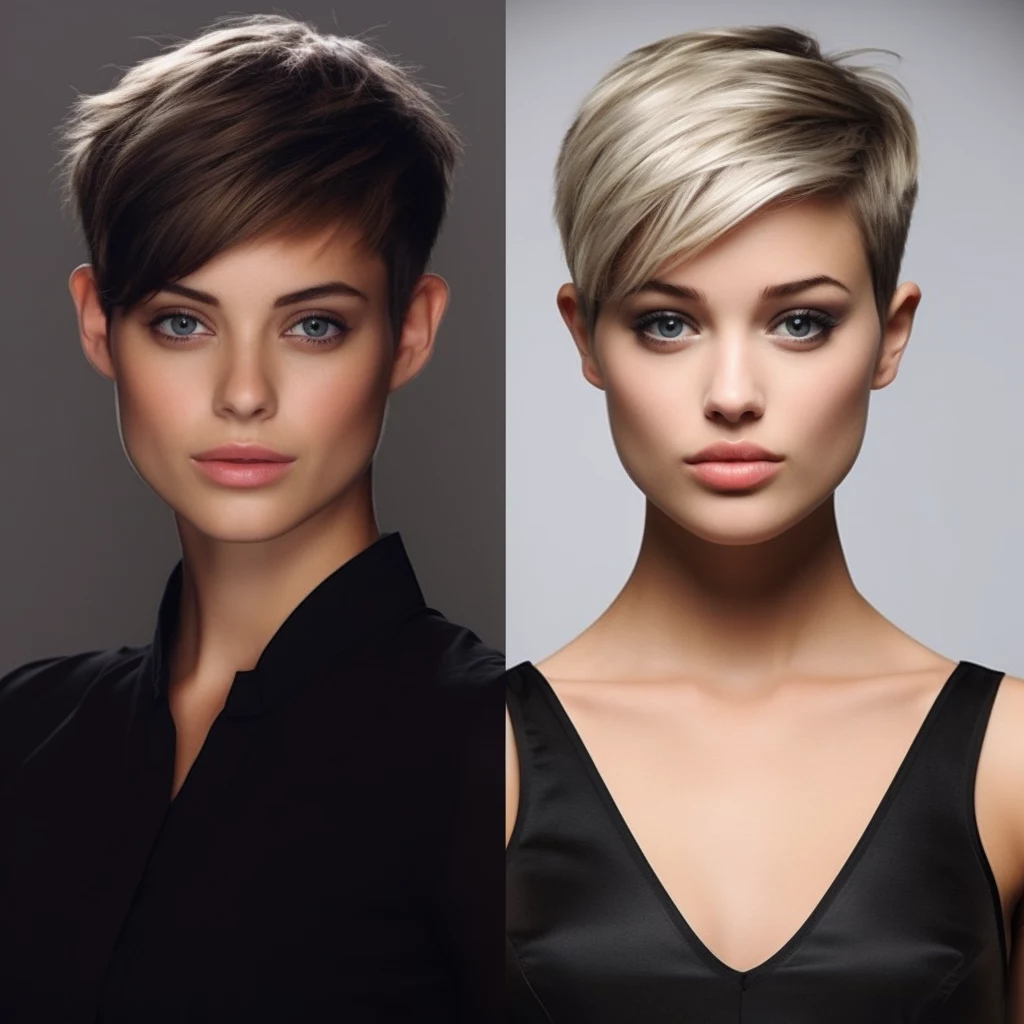
Let’s Talk Money: The Pixie Budget
Okay, let’s get down to brass tacks. A great pixie is an investment. Here’s a realistic breakdown of the costs:
- The Initial Cut: Depending on your city and the stylist’s experience level, expect to pay anywhere from $75 to $250+ for a detailed, sculpted pixie cut. Yes, it’s more than a trim—you’re paying for their expertise in short hair.
- Maintenance Trims: To keep that perfect shape, you’ll need a trim every 4-6 weeks. These appointments are usually quicker and can cost between $50 and $90.
- The Yearly Cost: Being honest with yourself, you’re looking at a budget of $500 to $1,000+ per year in haircuts alone. It’s a commitment, but for those who love it, it’s totally worth it.
Your At-Home Toolkit and Styling Secrets
You don’t need a shelf full of products. You just need the right one or two.
Your go-to product will likely be a texture paste, pomade, or styling wax. For fine hair, a dry texture spray is a game-changer. For thick, unruly hair, a firm wax pomade gives you the control you need. A pea-sized amount of a quality matte paste is a fantastic all-rounder for most hair types.
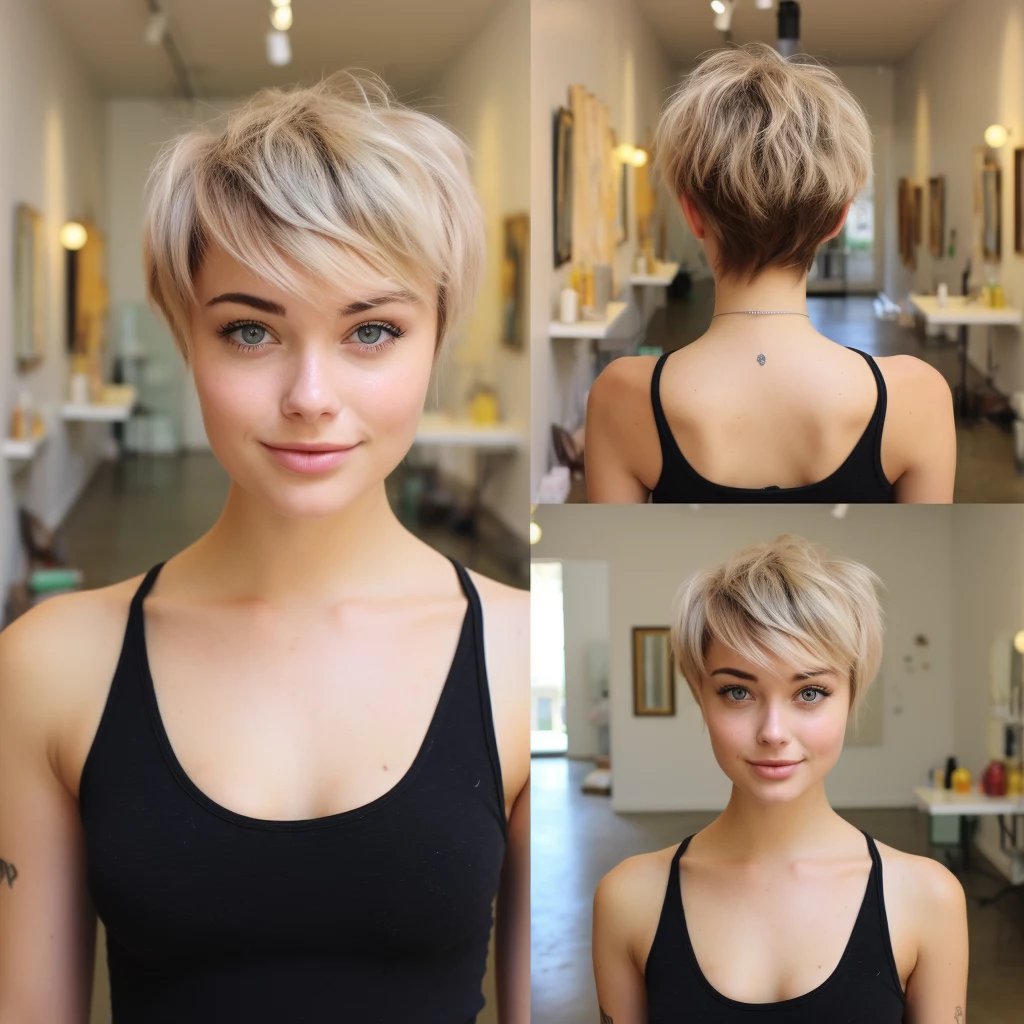
Oh yeah, here’s my foolproof 2-minute messy pixie routine:
- Start with 100% dry hair. This is non-negotiable.
- Scrape a tiny, pea-sized amount of pomade or paste with the back of your fingernail.
- Warm it up by rubbing your palms together until it basically disappears. This is the most-skipped step and it’s critical!
- Rake your fingers up and back through your hair, starting at the roots, to create lift and direction.
- Pinch and twist a few pieces around your face to define them. And… you’re done.
Eventually, you’ll face the grow-out phase. It can be awkward, but it’s not impossible. The key is to have your stylist shape it up every 8 weeks or so. We can trim the back into a cute, short bob shape while the top catches up. A few cute clips or a headband can be your best friend during this stage.
A Final Thought…
A pixie cut is a true collaboration between you and your stylist. It’s a craft that blends artistry with precision. When it’s done right, it can feel like the most liberating, authentic version of you. So do your homework, find a stylist you vibe with, and have that honest conversation. It’s a big step, but it might just be the best one you ever take for your hair.
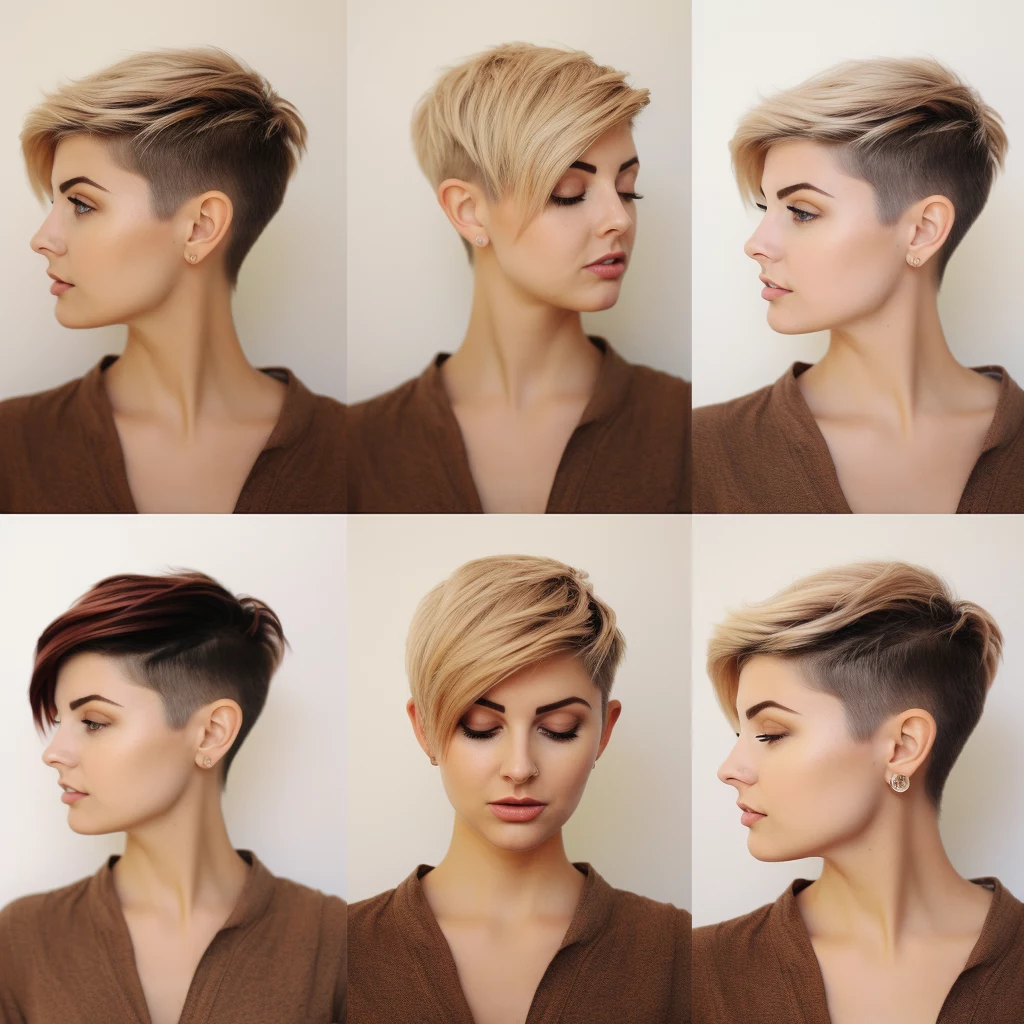
Galerie d’inspiration
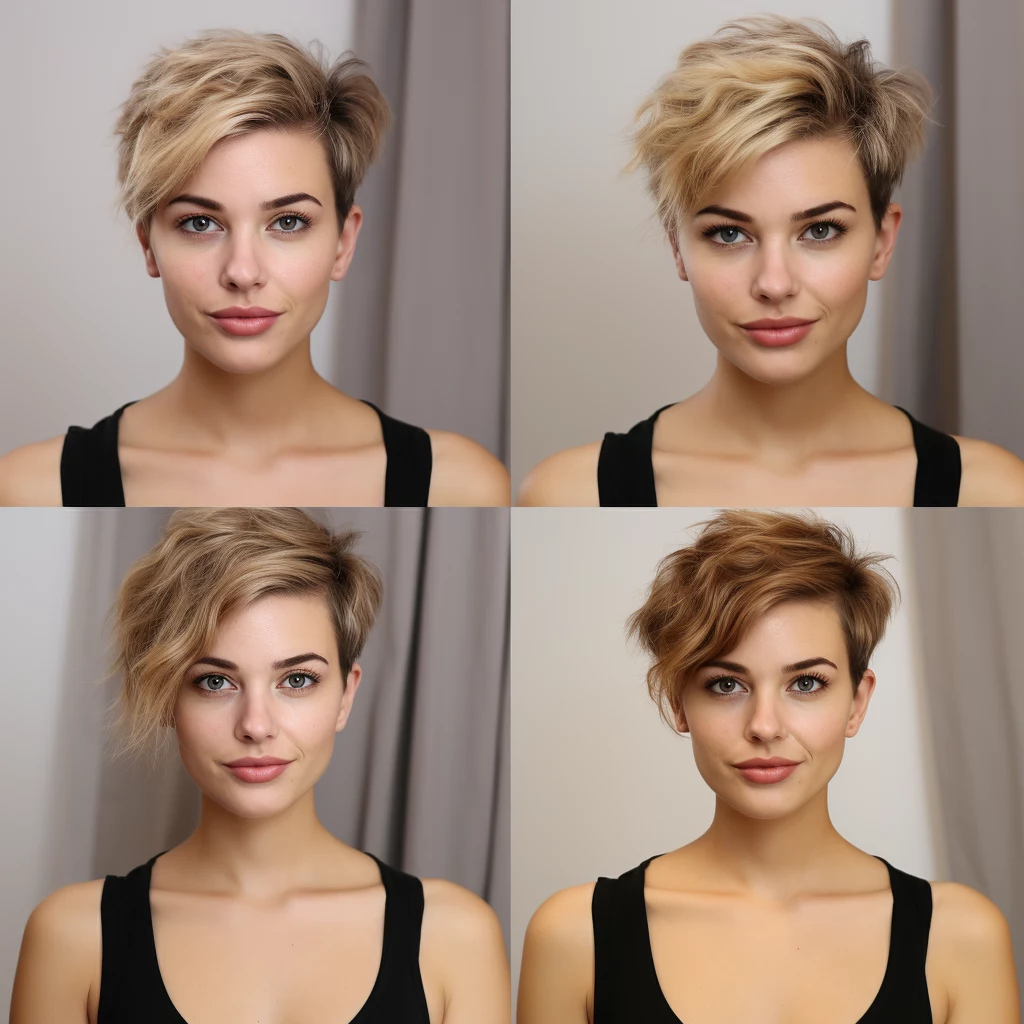

The right tools are everything: Once you leave the salon, your pixie’s personality is in your hands. A mini flat iron is non-negotiable for taming unruly pieces or adding a sleek finish. For texture, nothing beats a quality styling paste like Redken’s Texture Paste. And for volume at the root? A light puff of styling powder, such as Oribe’s Swept Up Volume Powder Spray, applied directly to the scalp and tousled with your fingertips, works wonders.
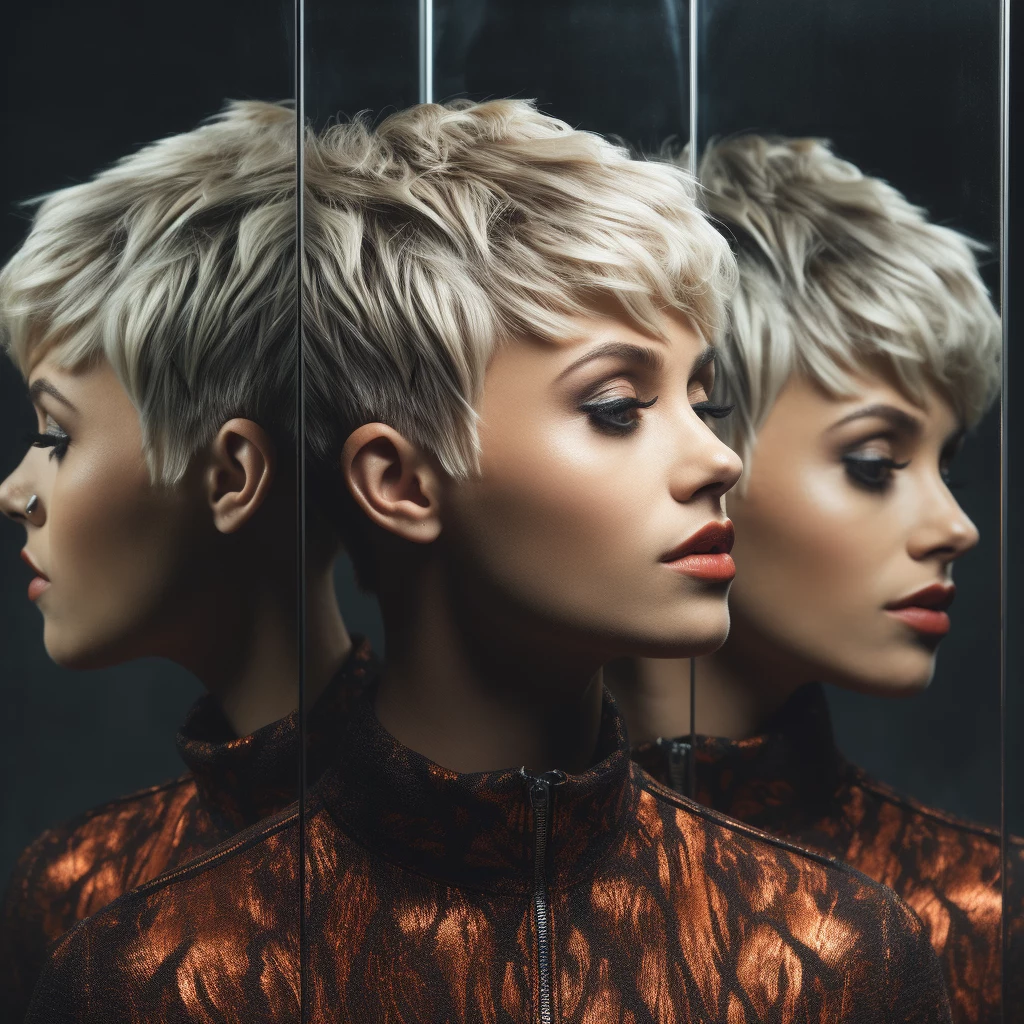
Will a pixie make my face look too round?
It’s a common fear, but the answer lies in the cut’s architecture. A skilled stylist won’t give you a helmet-like shape. Instead, they’ll create volume and height on top to elongate the face, while keeping the sides leaner. Soft, piece-y bangs swept to the side also draw the eye diagonally, breaking up the roundness. It’s all about creating strategic angles.
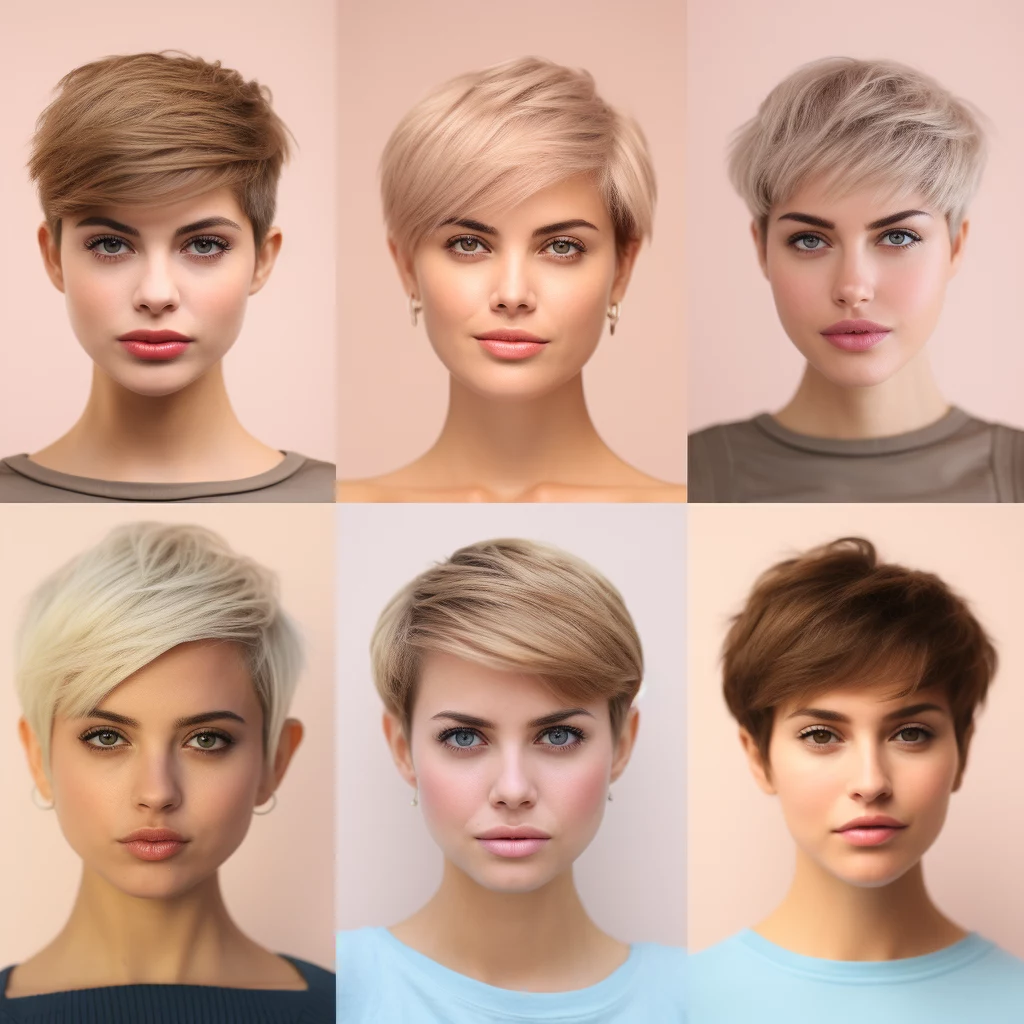
Styling Wax: Ideal for creating definition and hold in shorter, spikier styles. It has a stronger grip, perfect for making individual pieces stand out. Think precise, sculpted texture.
Styling Paste: Offers a more pliable, matte finish. It’s better for creating that effortlessly tousled, “lived-in” look on longer pixies. It adds body without stiffness.
For most modern, softer pixies, a paste offers more versatility.
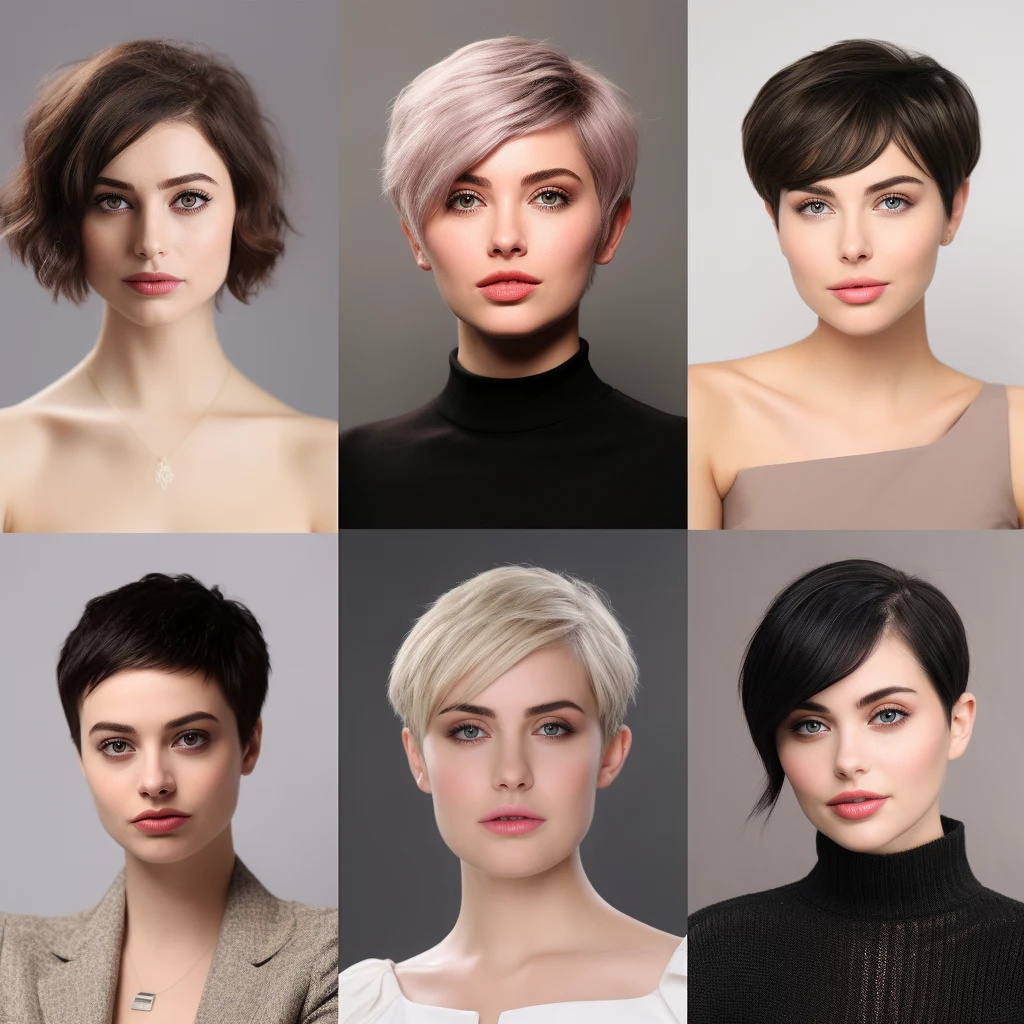
A pixie cut puts your hair color on full display. With less hair, the color needs to be perfect. Subtly placed highlights can mimic the way light hits the hair, adding dimension and making fine hair appear thicker. Conversely, a bold, solid color—a platinum blonde, a deep espresso, or a vibrant copper—can turn a simple cut into a high-fashion statement. Talk to your colorist about how to make your new cut truly pop.
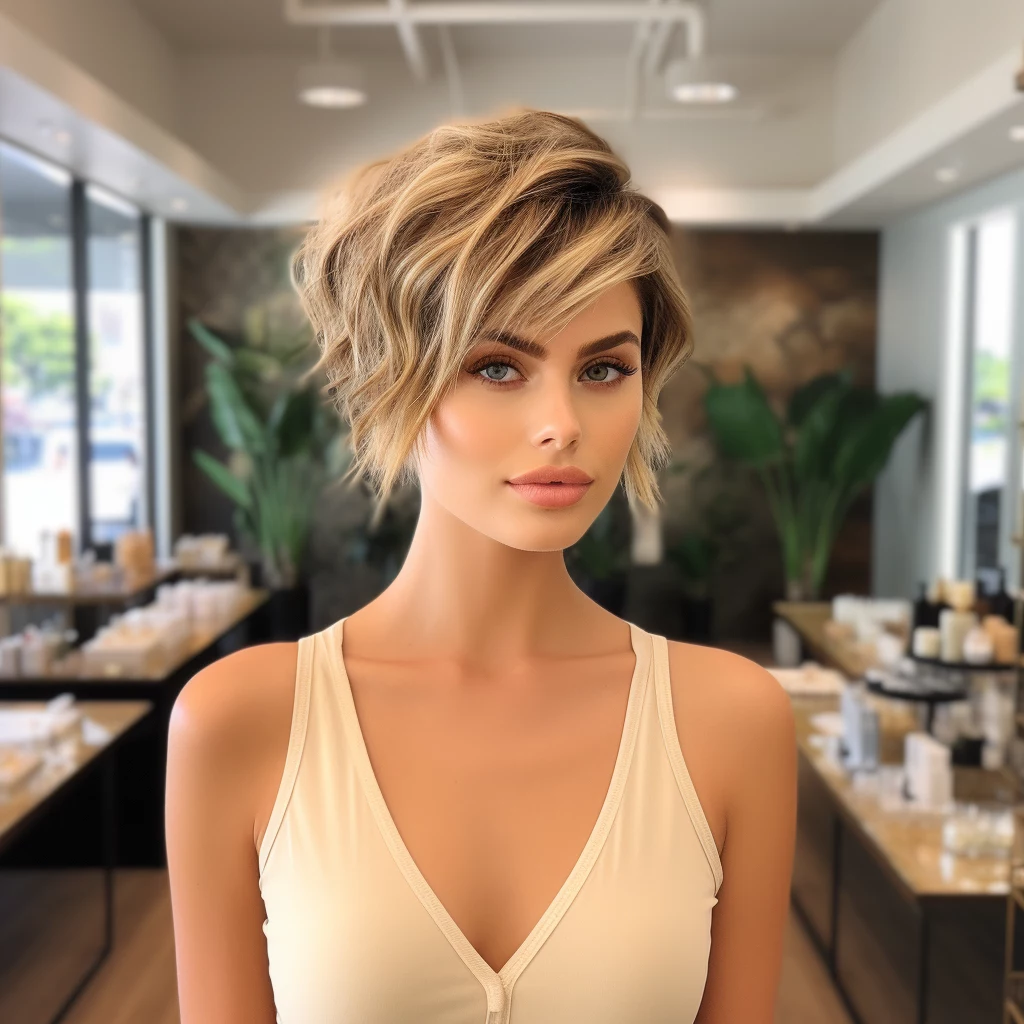
- Frame your face with a new focal point.
- Instantly elevate a simple t-shirt and jeans.
- Add a touch of elegance or edge in seconds.
The secret? Statement earrings. With a pixie, your ears and neckline are showcased. This is your moment to play with bold hoops, delicate drop earrings, or edgy studs that might have gotten lost in longer hair.
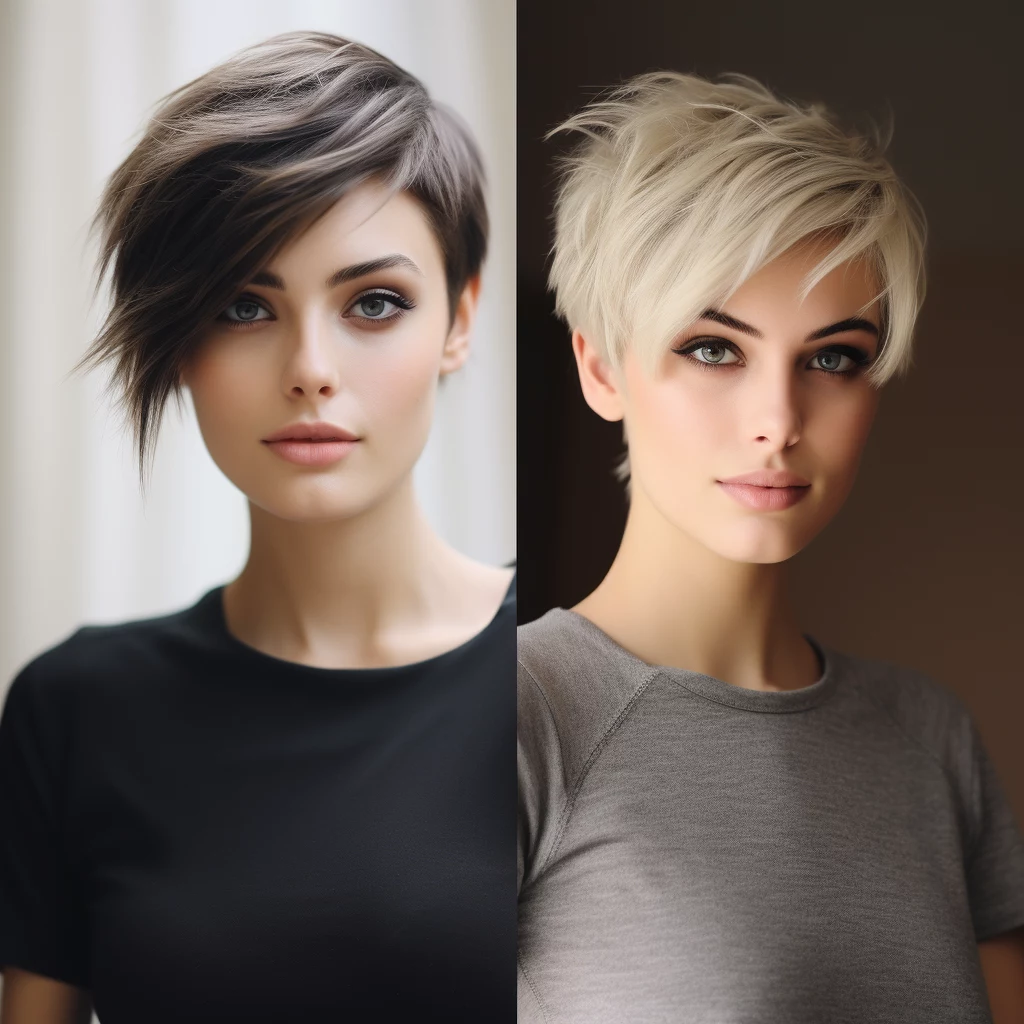

That first hair wash post-cut is a sensory shock. You’ll reach for a familiar handful of shampoo only to realize you need a tiny, dime-sized amount. The feeling of water directly on your scalp and the speed of the rinse is a strange new luxury. It’s one of the first moments you truly realize how much has changed.
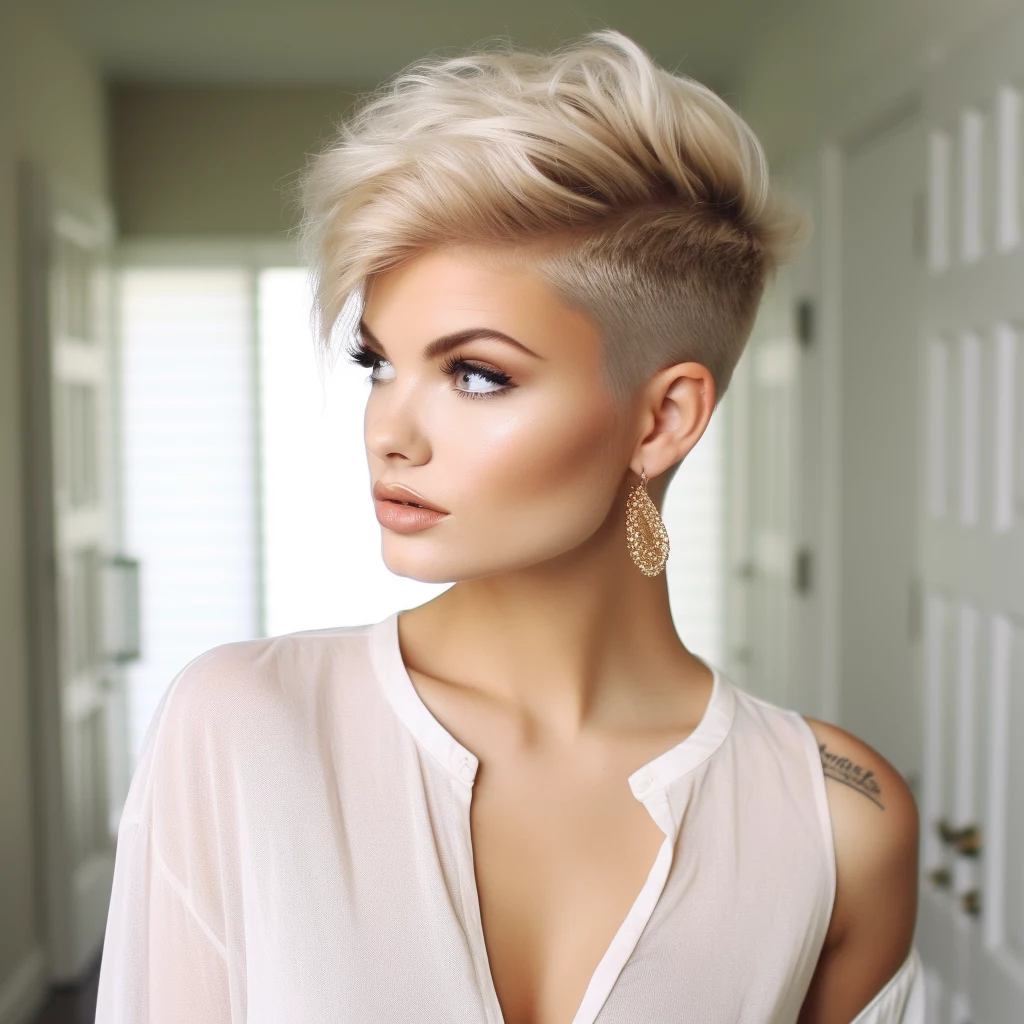
A pixie cut typically needs a trim every 4 to 6 weeks to maintain its shape.
While your daily routine may be faster, the budget for maintenance can be higher than with long hair. A cut that looks perfect on day one can look shapeless by week seven. Factor in these regular salon visits when considering the overall commitment. Some stylists offer discounted ‘clean-up’ appointments for bangs and necklines between full cuts.

One common mistake: Applying product directly to the top of your hair. This weighs it down and can look greasy. Instead, emulsify a small amount of paste or wax in your palms and start from the back, working your way forward. Apply it to the roots and mid-lengths for lift and texture, using only what’s left on your fingertips to define the front pieces.

The inevitable grow-out phase doesn’t have to be awkward. The key is to embrace the transitions.
- Stage 1 (The Shaggy Pixie): Use headbands and texturizing spray to manage the growing layers.
- Stage 2 (The Mini-Bob): Your stylist can start shaping the back into a slight ‘A-line’ to avoid the dreaded mullet stage. This is where mini-clips and bobby pins become your best friends.
- Stage 3 (The Bob): You’ve made it! Now you can play with a classic chin-length style before deciding on your next move.
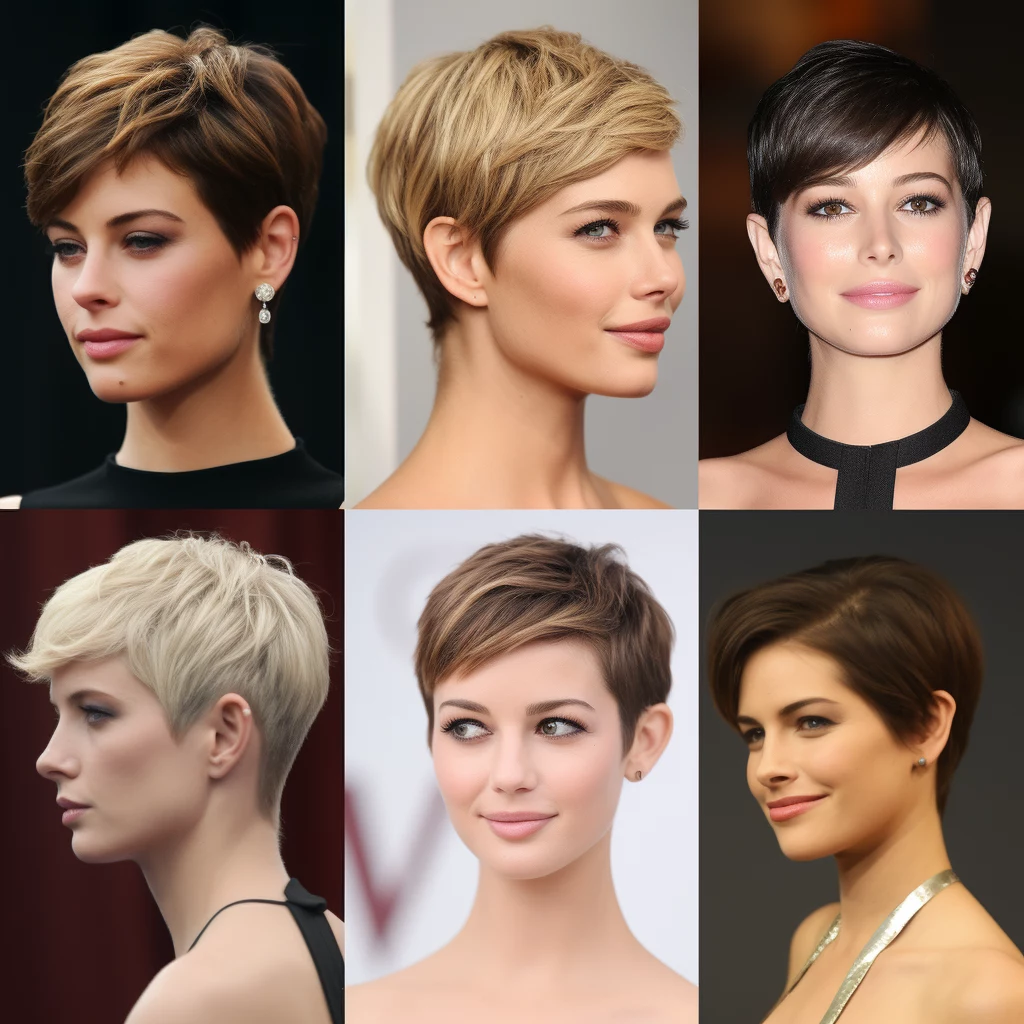
Not ready for the full chop? The ‘Bixie’—a hybrid of a pixie and a bob—is the trend of the moment. It keeps the feathered texture and short layers of a pixie around the face but leaves more length and weight at the back, just brushing the nape of the neck. It offers the playful spirit of a pixie with the softness of a short bob.
Think of the iconic pixies: Audrey Hepburn’s sweet gamine crop, Twiggy’s sleek 60s mod cut, or Halle Berry’s spiky Y2K look. Each defined not just a person, but an era of fashion and attitude.










